Themed collection Polymer Chemistry Most Popular 2020

Photoinduced free radical promoted cationic polymerization 40 years after its discovery
Free radical promoted cationic photopolymerization has been described with its historical background, main principles and usage in polymer synthesis.
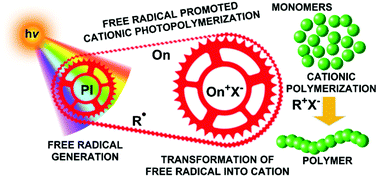
Polym. Chem., 2020,11, 1111-1121
https://doi.org/10.1039/C9PY01903K
Recent advances in RAFT polymerization of monomers derived from renewable resources
In this Minireview, RAFT polymerization of monomers derived from renewable resources is explored. Methods used to prepare these monomers are discussed, and potential applications of the resulting renewable polymers are highlighted.
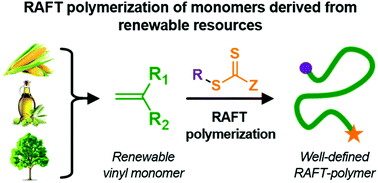
Polym. Chem., 2020,11, 220-229
https://doi.org/10.1039/C9PY01128E
Chemical recycling of poly(bisphenol A carbonate)
This review covers the current status of chemical recycling and upcycling of poly(bisphenol A carbonate), a leading engineering plastic of great economic and environmental interest.
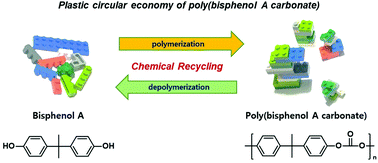
Polym. Chem., 2020,11, 4830-4849
https://doi.org/10.1039/C9PY01927H
Polymerization techniques in polymerization-induced self-assembly (PISA)
The development of controlled/“living” polymerization greatly stimulated the prosperity of the fabrication and application of block copolymer nano-objects.
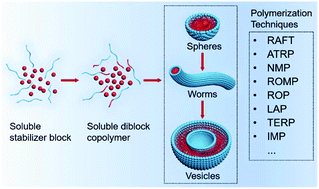
Polym. Chem., 2020,11, 3673-3689
https://doi.org/10.1039/D0PY00455C
Polymer mechanochemistry-enabled pericyclic reactions
Polymer mechanochemical pericyclic reactions are reviewed with regard to their structural features and substitution prerequisites to the polymer framework.
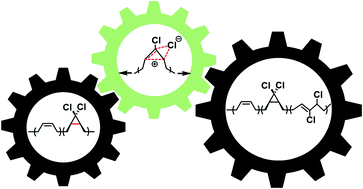
Polym. Chem., 2020,11, 2274-2299
https://doi.org/10.1039/C9PY01937E
Dynamic covalent bonds in self-healing, shape memory, and controllable stiffness hydrogels
A review of hydrogels containing dynamic bonds that are shown to provide benefits for applications including self-healing and stimuli-induced stiffness changes.
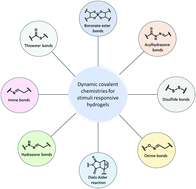
Polym. Chem., 2020,11, 1410-1423
https://doi.org/10.1039/C9PY01694E
Synthetic approaches for multiblock copolymers
Multiblock copolymers (MBCs) are an emerging class of synthetic polymers that exhibit different macromolecular architectures and behaviours to those of homopolymers or di/triblock copolymers.
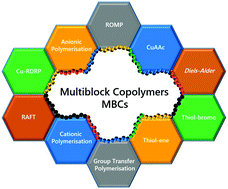
Polym. Chem., 2020,11, 1271-1291
https://doi.org/10.1039/C9PY01571J
A guide to supramolecular polymerizations
Supramolecular polymers are non-covalent assemblies of unimeric building blocks connected by secondary interactions and hold great promises due to their dynamic nature.

Polym. Chem., 2020,11, 1083-1110
https://doi.org/10.1039/C9PY01342C
Hydrogel scaffolds for tissue engineering: the importance of polymer choice
We explore the design and synthesis of hydrogel scaffolds for tissue engineering from the perspective of the underlying polymer chemistry. The key polymers, properties and architectures used, and their effect on tissue growth are discussed.
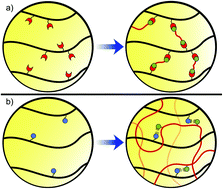
Polym. Chem., 2020,11, 184-219
https://doi.org/10.1039/C9PY01021A
Tuning chromatic response, sensitivity, and specificity of polydiacetylene-based sensors
In this review, we provide an overview of six major techniques to tune the sensitivity and specificity of polydiacetylene-based sensors.
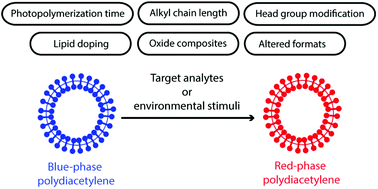
Polym. Chem., 2020,11, 166-183
https://doi.org/10.1039/C9PY00949C
3D printing of polymeric materials based on photo-RAFT polymerization
For the first time, we report 3D printing of RAFT-based formulations to fabricate functional objects in a layer-by-layer fashion.

Polym. Chem., 2020,11, 641-647
https://doi.org/10.1039/C9PY01419E
A 2D covalent organic framework involving strong intramolecular hydrogen bonds for advanced supercapacitors
A two-dimensional covalent organic framework with abundant intramolecular hydrogen bonds and a benzobisthiazole skeleton shows a superior specific capacitance of 724 F g−1 at 1 A g−1.
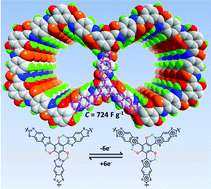
Polym. Chem., 2020,11, 47-52
https://doi.org/10.1039/C9PY01623F
TPE-containing amphiphilic block copolymers: synthesis and application in the detection of nitroaromatic pollutants
Two AIE block copolymers termed P1 and P2 bearing TPE and PEG-based chains were synthesized with moderate molecular weights and narrow PDIs via RAFT polymerization. Both P1 and P2 can be used in the fluorescence detection of nitroaromatic compounds (NACs) and cell images.
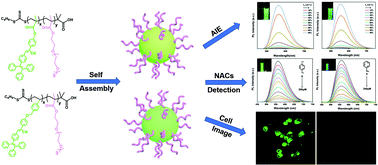
Polym. Chem., 2020,11, 7244-7252
https://doi.org/10.1039/D0PY01162B
Tacticity, molecular weight, and temporal control by lanthanide triflate-catalyzed stereoselective radical polymerization of acrylamides with an organotellurium chain transfer agent
Ternary control over molecular weight, tacticity, and time was achieved in the polymerization of acrylamides by photo-induced organotellurium-mediated radical polymerization (TERP) in the presence of Y(OTf)3 or Yb(OTf)3 as an acid catalyst.
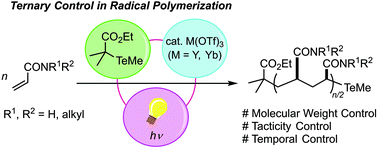
Polym. Chem., 2020,11, 7042-7049
https://doi.org/10.1039/D0PY01280G
Thermoresponsive properties of poly(acrylamide-co-acrylonitrile)-based diblock copolymers synthesized (by PISA) in water
UCST-type poly(acrylamide-co-acrylonitrile) diblock copolymers synthesized in water (by PISA) can not only undergo reversible temperature-induced chain dissociation, but also temperature-induced morphological transition.
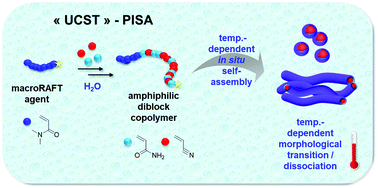
Polym. Chem., 2020,11, 5998-6008
https://doi.org/10.1039/D0PY00895H
Mechanically robust and tough waterborne polyurethane films based on diselenide bonds and dual H-bonding interactions with fast visible-light-triggered room-temperature self-healability
A dynamic but mechanically robust and tough polymer network was proposed, in which the fast room-temperature self-healing of our target polymer with mechanically robust and tough features is achieved under visible light.
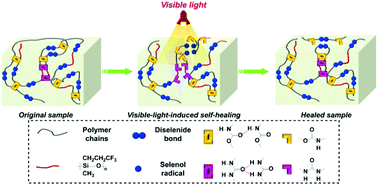
Polym. Chem., 2020,11, 5463-5474
https://doi.org/10.1039/D0PY00897D
Influence of the polymer matrix on the viscoelastic behaviour of vitrimers
Vitrimers, an emerging field of research, in which still many fundamental aspects of material design remain to be explored. Here, we systematically explore the effect of the choice of the matrix on a dynamic exchange reaction in a polymer network.
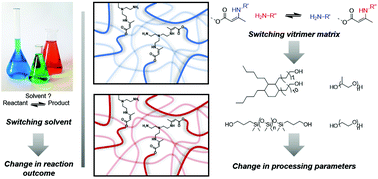
Polym. Chem., 2020,11, 5377-5385
https://doi.org/10.1039/D0PY00114G
Mixed mechanisms of bond exchange in covalent adaptable networks: monitoring the contribution of reversible exchange and reversible addition in thiol–succinic anhydride dynamic networks
Thioester anhydride reversible addition and thiol–thioester reversible exchange are discussed as two competing mechanisms dictating the dynamic response in thiol–succinic anhydride dynamic networks.
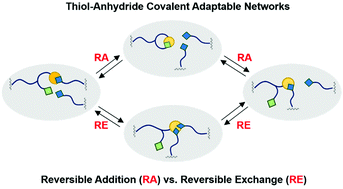
Polym. Chem., 2020,11, 5365-5376
https://doi.org/10.1039/D0PY00091D
Mechanically robust and reprocessable imine exchange networks from modular polyester pre-polymers
Covalent adaptable networks (CANs) containing dynamic imine cross-links impart recyclability to thermoset materials, and the distribution of these cross-links greatly affects their observed thermomechanical properties.
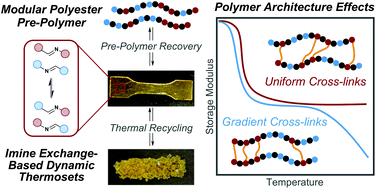
Polym. Chem., 2020,11, 5346-5355
https://doi.org/10.1039/C9PY01957J
A remote nonconjugated electron effect in insertion polymerization with α-diimine nickel and palladium species
The remote nonconjugated electronic perturbations exert great influence on ethylene polymerization.

Polym. Chem., 2020,11, 2692-2699
https://doi.org/10.1039/D0PY00218F
In silico rational design by molecular modeling of new ketones as photoinitiators in three-component photoinitiating systems: application in 3D printing
New photoinitiators for 3D printing were in silico developed by molecular modeling.
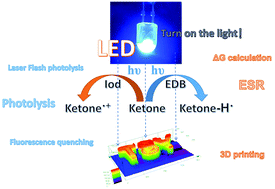
Polym. Chem., 2020,11, 2230-2242
https://doi.org/10.1039/C9PY01874C
The effect of aggregation behavior on photovoltaic performances in benzodithiophene-thiazolothiazole-based wide band-gap conjugated polymers with side chain position changes
Two thiazolothiazole-based polymers were designed and synthesized, which exhibited significantly different aggregation and photovoltaic properties.
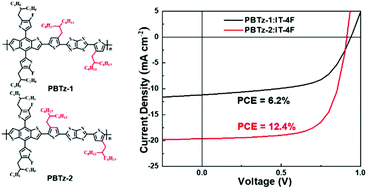
Polym. Chem., 2020,11, 1629-1636
https://doi.org/10.1039/C9PY01438A
Triphenylamine-hexaarylbiimidazole derivatives as hydrogen-acceptor photoinitiators for free radical photopolymerization under UV and LED light
In this study, three triphenylamine-based hexaarylbiimidazole (HABI) derivatives featuring different numbers of methoxy groups (none for HABI1, two for HABI2, and four for HABI3) have been synthesized.
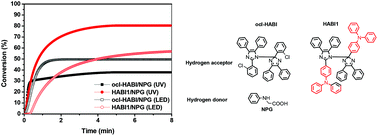
Polym. Chem., 2020,11, 1504-1513
https://doi.org/10.1039/C9PY01605H
Structural tuning of polycaprolactone based thermadapt shape memory polymer
Polycaprolactone based thermadapt shape memory polymers with precisely controlled structures allow tunable shape reconfigurability.
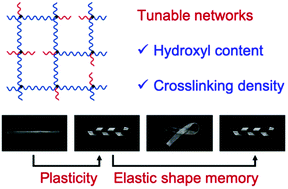
Polym. Chem., 2020,11, 1369-1374
https://doi.org/10.1039/C9PY01891C
Flexible cycloalkyl substituents in insertion polymerization with α-diimine nickel and palladium species
The investigation of the relationship between the structure of the catalyst and the microstructure of the obtained polymer has attracted much attention and broad interest in the field of transition metal-catalyzed olefin polymerization.
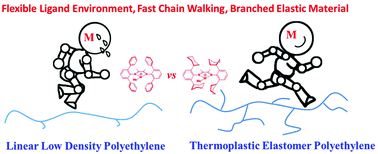
Polym. Chem., 2020,11, 1393-1400
https://doi.org/10.1039/C9PY01901D
Tuning the mechanical and dynamic properties of imine bond crosslinked elastomeric vitrimers by manipulating the crosslinking degree
Imine bond crosslinked networks with tunable mechanical and dynamic properties are prepared by varying the precursor molecular weight and network crosslinking degree.

Polym. Chem., 2020,11, 1348-1355
https://doi.org/10.1039/C9PY01826C
Cyanuric chloride as a potent catalyst for the reduction of curing temperature of benzoxazines
Cyanuric chloride (2,4,6-trichloro-1,3,5-triazine, TCT) was used as a catalyst to lower the ring opening polymerization (ROP) temperature of 1,3-benzoxazines.
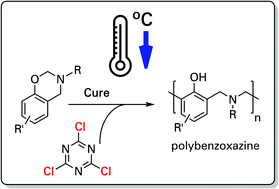
Polym. Chem., 2020,11, 1025-1032
https://doi.org/10.1039/C9PY01631G
Polybenzimidazole co-polymers: their synthesis, morphology and high temperature fuel cell membrane properties
Polybenzimidazole (PBI) random co-polymers containing alicyclic and aromatic backbones were synthesized using two different dicarboxylic acids (viz., cyclohexane dicarboxylic acid and terephthalic acid) by varying their molar ratios.
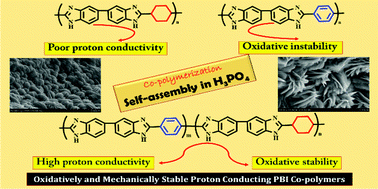
Polym. Chem., 2020,11, 1043-1054
https://doi.org/10.1039/C9PY01403A
New bimolecular photoinitiating systems based on terphenyl derivatives as highly efficient photosensitizers for 3D printing application
New 2-(diethylamino)-4,6-diphenyl-benzene-1,3-dicarbonitrile derivatives were proposed as photoinitiators in conjunction with iodonium salts for: (i) the cationic polymerization, (ii) the free-radical polymerization, and (iii) the synthesis of IPNs.

Polym. Chem., 2020,11, 922-935
https://doi.org/10.1039/C9PY01551E
Ligand–metal secondary interactions in phosphine–sulfonate palladium and nickel catalyzed ethylene (co)polymerization
Ligand secondary interactions and Lewis acid modulation are simultaneously achieved in palladium and nickel catalyzed ethylene polymerization and copolymerization.
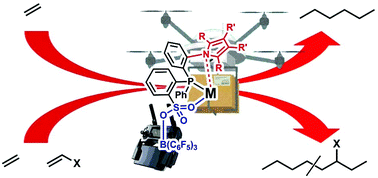
Polym. Chem., 2020,11, 411-416
https://doi.org/10.1039/C9PY00904C
Predictive design of polymer molecular weight distributions in anionic polymerization
Polymer molecular weight distributions are targeted through kinetic modeled with high fidelity based on the temporal control of chain initiation in anionic polymerizations.
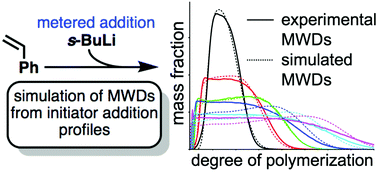
Polym. Chem., 2020,11, 326-336
https://doi.org/10.1039/C9PY00074G
About this collection
This online collection features some of the most cited, most downloaded and most shared articles published in Polymer Chemistry during 2020. Thank you to our authors, reviewers and readers for your ongoing support.